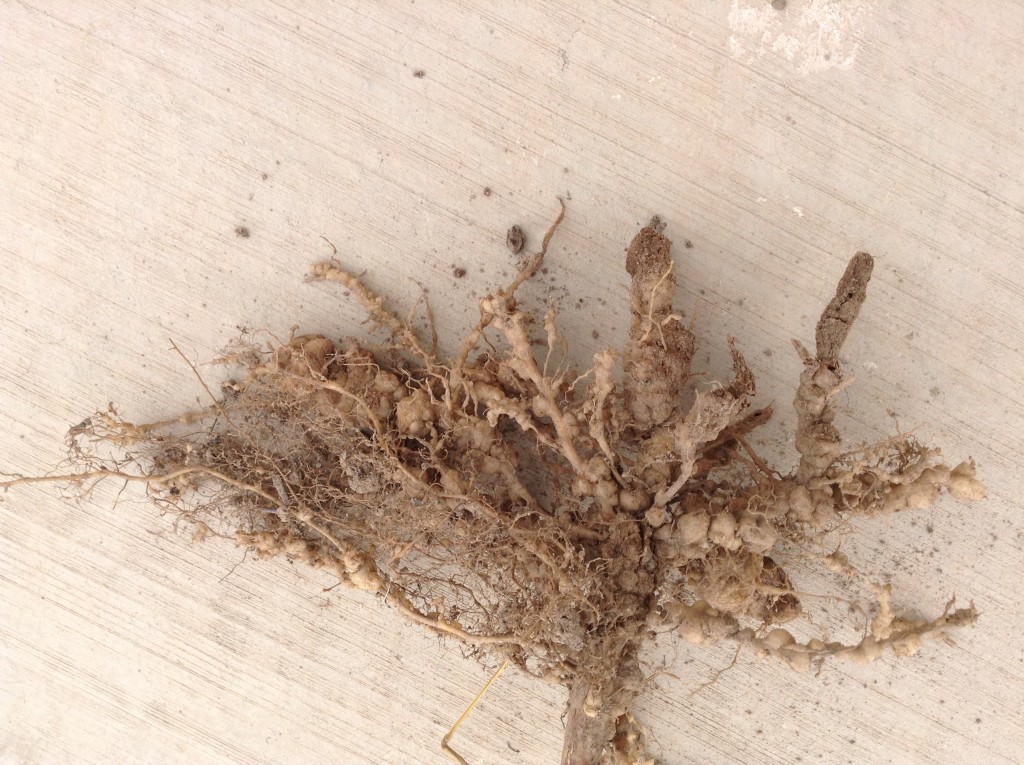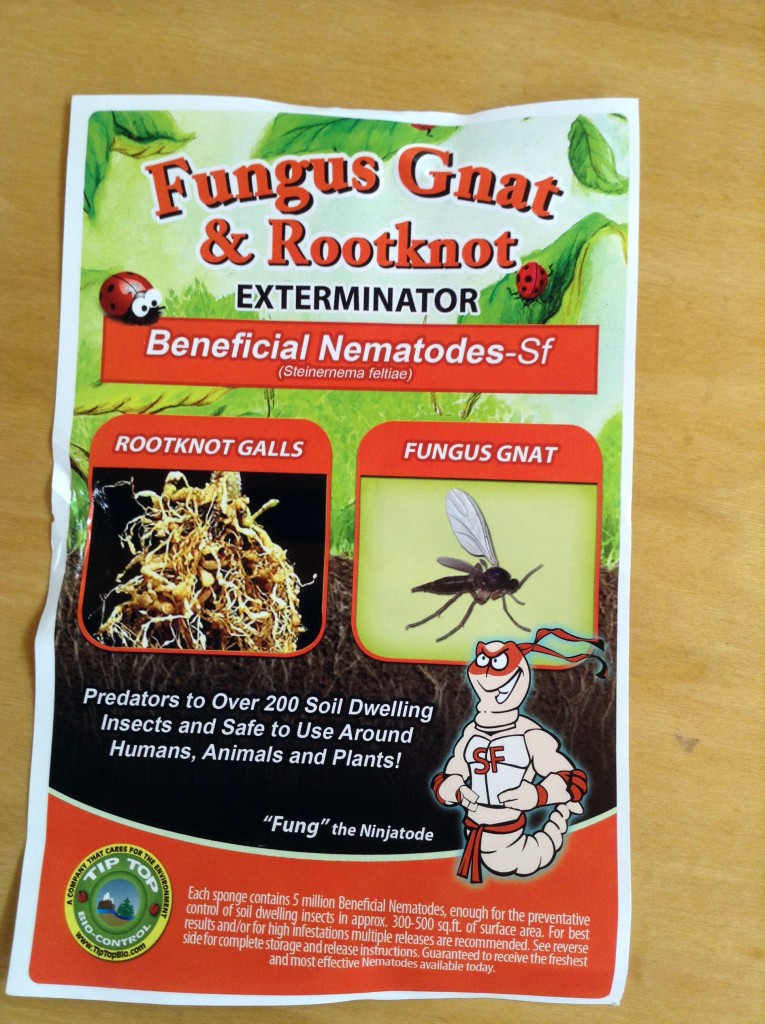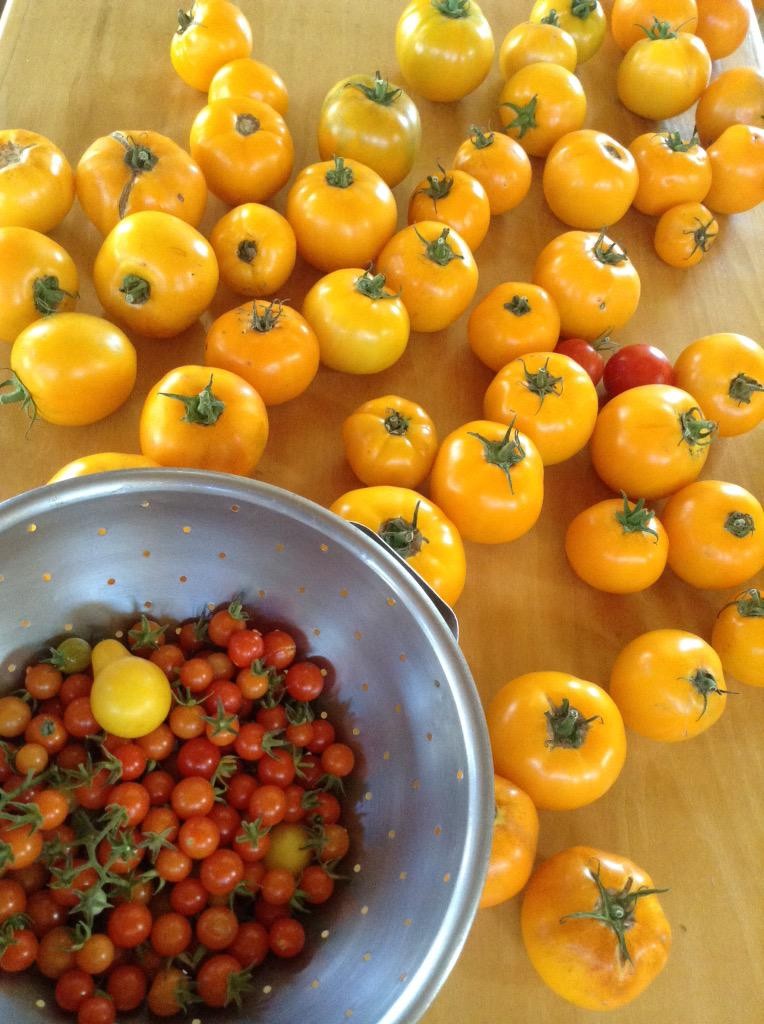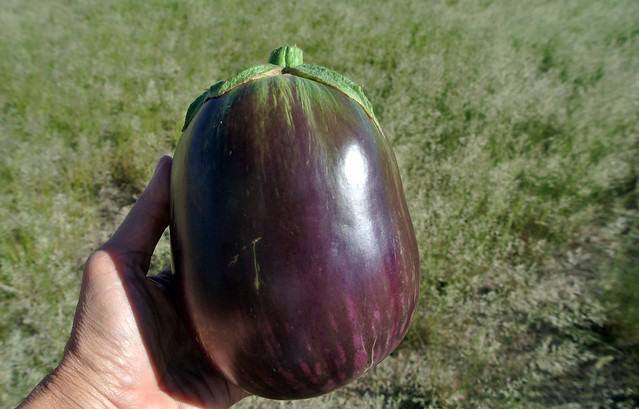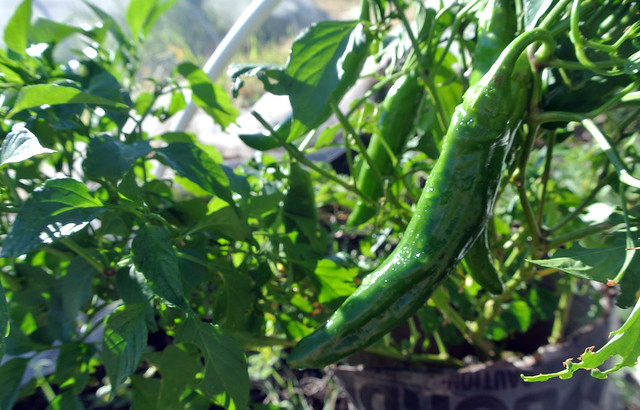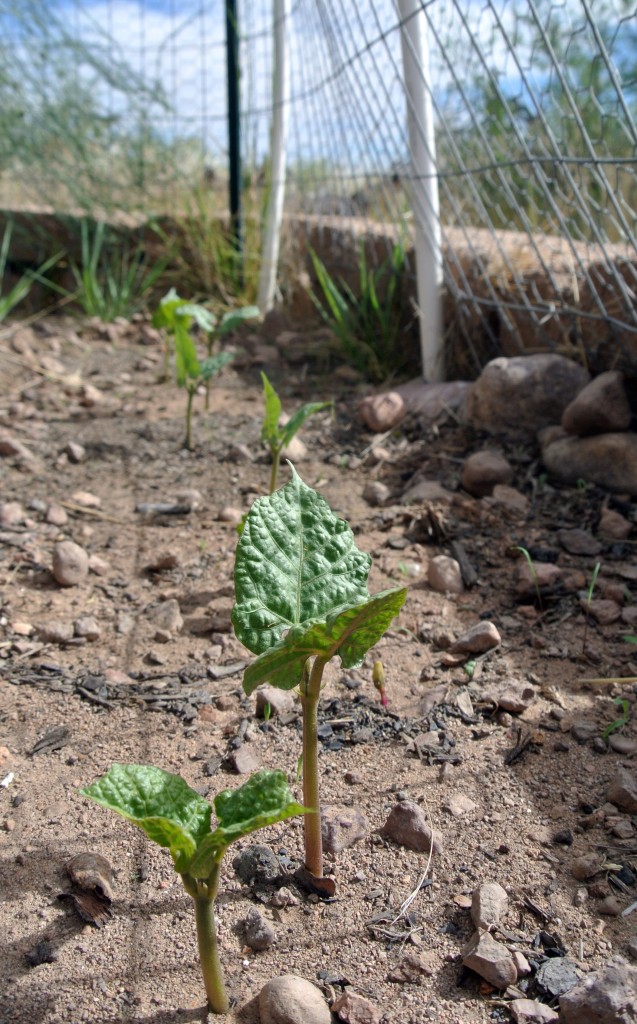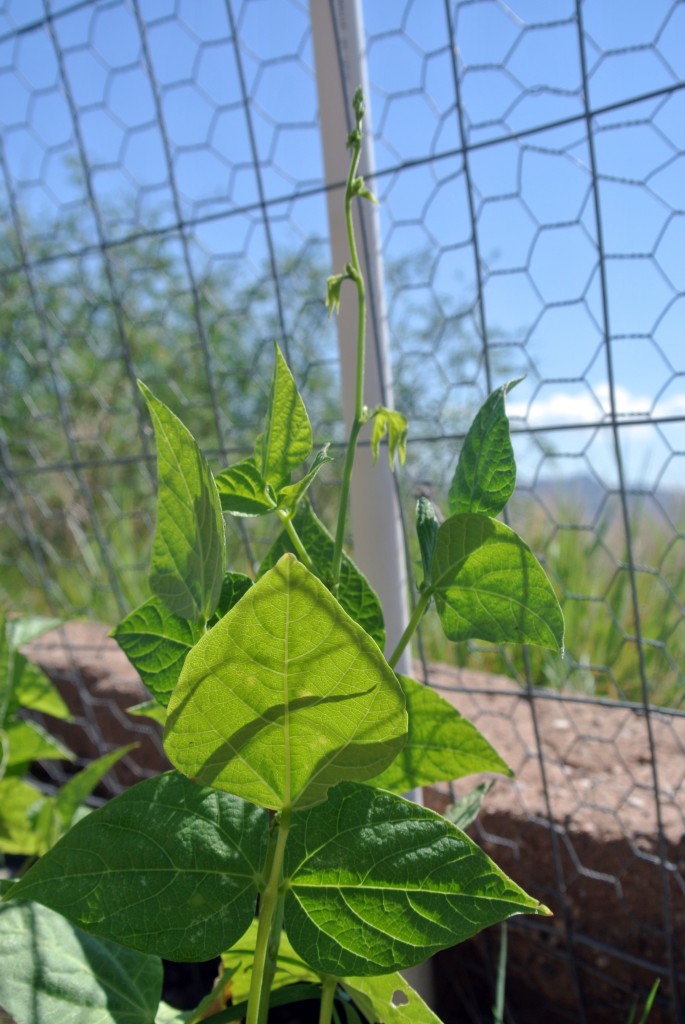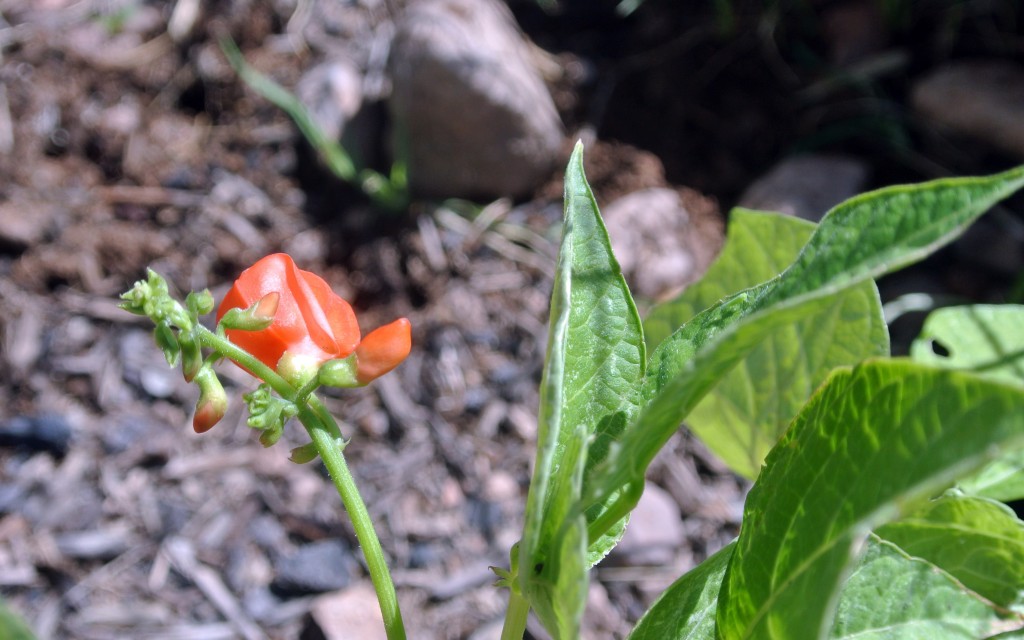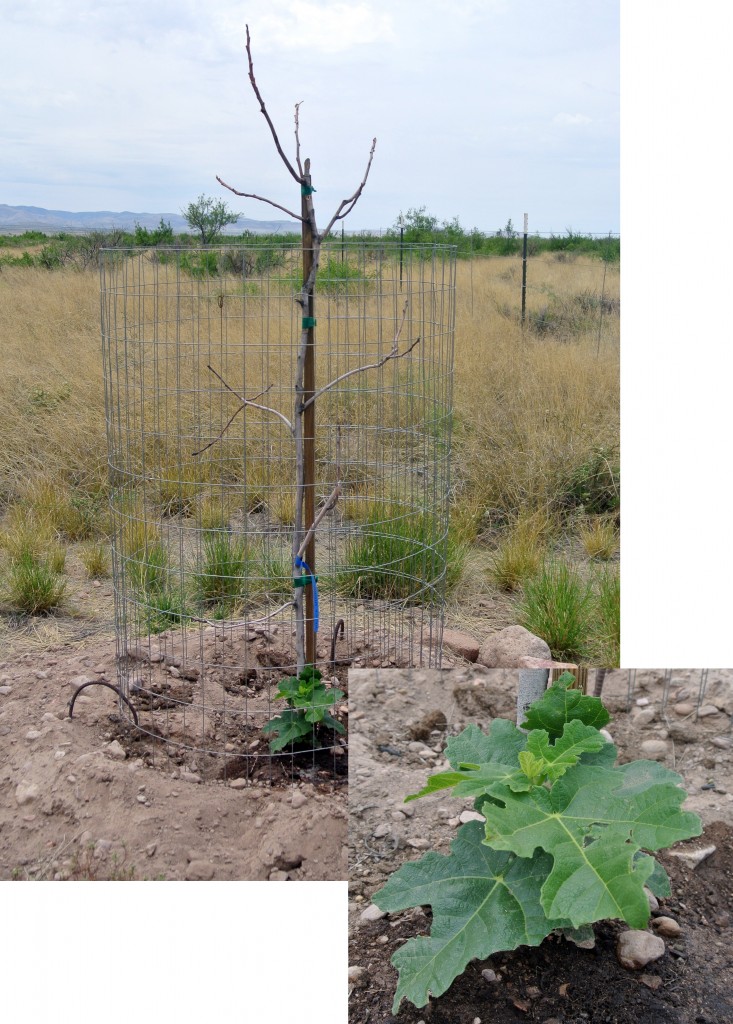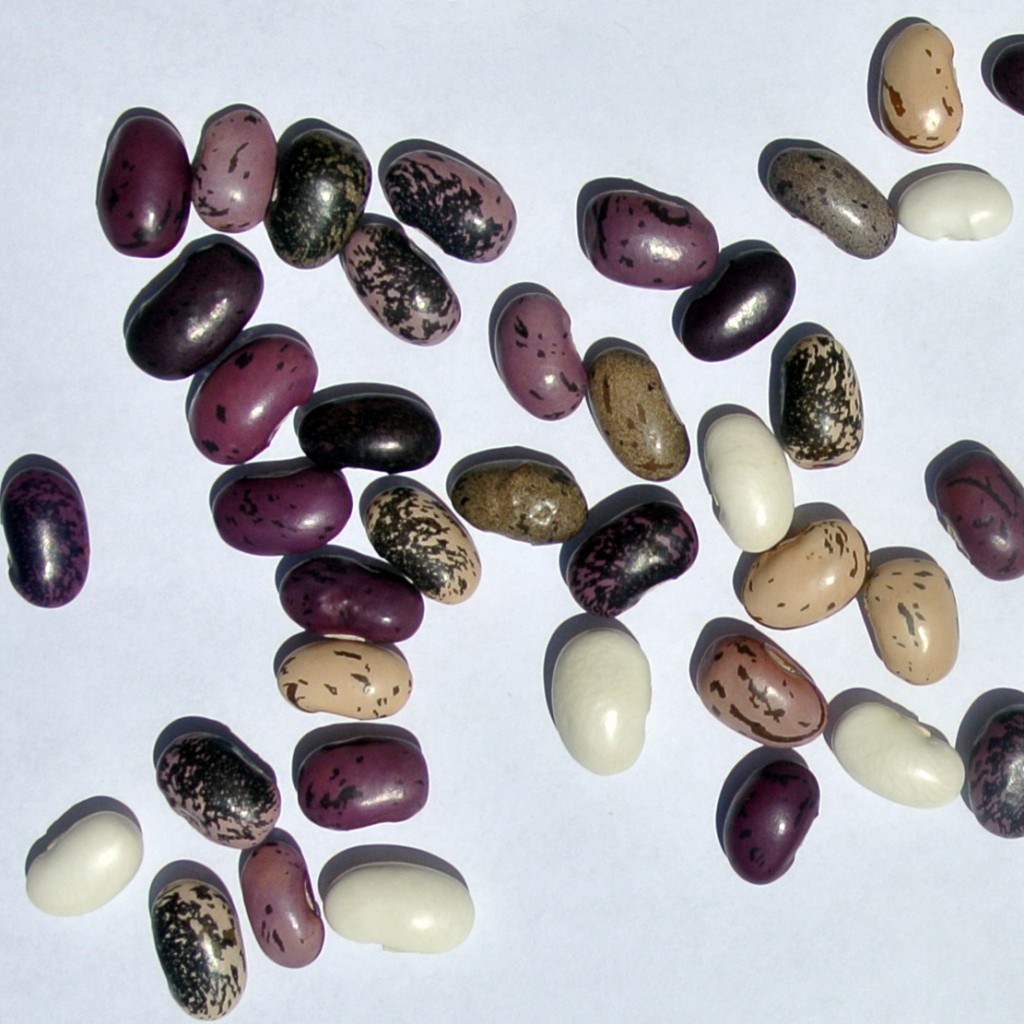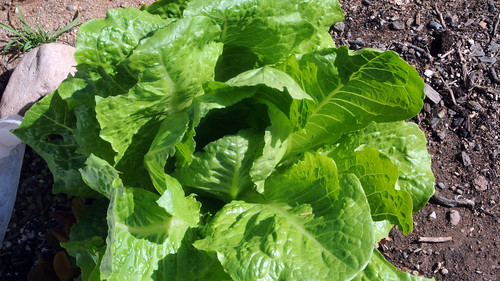A hard first frost here last night means a harvest today of these guys.
garden
...now browsing by tag
First frost
Friday, November 6th, 2015Everything I didn’t want to know about nematodes
Tuesday, October 27th, 2015I’d heard of nematodes, but was only vaguely aware of them as some sort of awful garden pest. Mostly, I focus most of my energy on challenges I already have, and nematode problems we did not have. Until now.
This year in clearing out some beds for fall plantings, I found roots that were gnarled with lumps, indicative I learned, of bad nematodes.
I went on to learn that nematodes are the most prevalent multi-celled animals on earth and roughly resemble microscopic worms. There are both bad and good varieties, and the bad ones destroy about 5% of crops worldwide. In gardens like mine, they are responsible for lower yields and weaker plants.
There are several ways to combat bad nematodes: replace all your soil (not a great option), plant French marigolds (questionable as to effectiveness) or fight them with so-called beneficial nematodes. These good nematodes can also combat other insect pests.
Turning to Amazon, we found many vendors who sell these beneficial nematodes, and these are the ones we ended up with.
They are shipped live and must be kept cool or they’ll die. They come in a little sponge which is washed out into water which is sprayed on the garden with a hose sprayer. They need to be applied in the evening when it is cool and there is low light. Apparently, they’re most effective with multiple applications, so we’ll do this again a couple times in the spring.
How did these bad nematodes get here, you ask? We asked ourselves the same question. One guess is that they were brought in with loads of external compost.
It will likely be another year before we know if this worked, so stay tuned for that.
In the meantime, about 400 garlic and shallots are now in the ground for winter. We’ll hope the nematodes don’t affect them.
This year’s garden
Thursday, September 17th, 2015Every year, the garden is a little different. This year seemed more different than most. We had a lot of rain (the monsoons are still going, though they seem close to the end), and it didn’t get as hot as usual. I don’t know if this accounted for the change or not, but things grew more slowly than usual.
We had more problems with pests than usual, including a newly developed talent of the rabbits to chew through our expensive insect netting. Brad got good at sewing it up. We had some other invaders, which are making us think about new ideas for next year.
This year’s top-producing crop was cucumbers. We must have harvested close to 150 of them, have given them to everyone we know, and have found some great new ways to use them, including several varieties of cucumber cocktails.
We have also enjoyed lettuce, watermelons, cantaloupe, strawberries, and onions. The tomatoes have been slow but are now really coming in. We’ve made several batches of salsa and tomato sauce and will make several more before the season ends.
Some things are just now ready. This is my first ever success with eggplant (picked today) and chiles. Both were ravaged by bugs early in the season, but then came back and produced.
All in all, it’s been a good year. We’ve had lots of fresh food to eat and share and will have lots put away for the winter.
Progress of the beans
Wednesday, July 8th, 2015The magic beans are doing well. Here are some pics along the way and a few random notes.
Miscellaneous notes:
- The beans took about a week to come up. I watered them daily until they were about 6″ high and then less frequently after that.
- The germination rate was close to 100%.
- Somewhere around week 2, the leaves of the beans started getting eaten pretty good. I suspect cutter bees. Since they aren’t around much and are supposed to do more good than harm, I decided to just leave them and see what happened.
- As expected, the cutter bees didn’t stay around long. They did a fair amount of damage, but nothing that couldn’t be overcome.
- At about 4 weeks, the monsoons hit, and the beans started growing much faster (like everything else).
- Today, at about 6 weeks, we saw the first blooms. I had heard they would be very pretty and red. these are a dark orange. We’ll see how the others look.
Variety, volume, and resilience
Sunday, June 7th, 2015One thing about growing as many different things as we do here is that for all the crushing disappointments (which I mostly don’t write about here), there are just as many stunning victories. Sometimes both wrapped up together.
Last year, we bought a small fig tree. It’s one of the few things we’ve bought, since we get most of our starts from friends or grow from seeds, and it cost a fair amount. Last year, it seemed to adapt well and even produced a few figs. Then this spring, it looked dead. In fact, you could see where birds had pecked holes in it, and the branches were dry and brittle. Big disappointment. After several months, I emailed someone I knew, and they said, “Just wait. They often die back and come back up from the ground.”
Indeed, a couple weeks ago, fig leaves could be seen at the base. It’s looking pretty healthy now. (I’m not sure whether to cut back the dead tree or just leave it. When in doubt, I generally opt to leave things as is.)
Nature is resilient, though sometimes things are successful and sometimes not. Trying lots of things seems to increase the odds that something will go right. Not just in gardening, but in life in general.
Magic beans
Sunday, May 24th, 2015A few weeks ago, I went to the International Seed Library Forum. It was a great gathering, and I met some amazing people, including a guy from Silver City.
When we met, he hold me about some multicolored “Legendary Beauty Way Beans” that he originally got from a friend in Snowflake, AZ, who says they were originally from an archaeological site in the southwest. After the event, he followed up by email and told me he’d send me some.
I got them and was astounded by how beautiful they are.
I’m planting them this weekend and will post updates on how it goes.
Visitors
Saturday, May 23rd, 2015This morning, I was brushing my teeth, looking out the window as I often do, and saw something unusual out toward the back. It was a large mammal, dark brown, stout, low to the ground. My still half-asleep mind searched to figure out what this might be. A large dog? A small bear?
Yes, you guessed it, it was the evil javelina. It lumbered off into the brush as I was calling Brad, but fortunately he got there in time to see its partner following behind. They were running off from having a drink at the water hole we put in for the animals. Silly us.
While we’ve seen plenty of damage from javelinas in the last two years, this was the first ones I’ve actually seen on our property. They were surprisingly large. All morning, I shook my head in amazement at having actually seen them.
As you may remember, last year, the unseen javelinas did quite a lot of damage to our garden. They ate tomatoes, watermelon, and sweet potato greens, as well as ripping up a lot of expensive insect netting.
Two weeks or so again, we had another visit; it was too depressing to write about at the time. They ate all my tomato starts. After nursing these along from seed for five months and just getting them outside, it was pretty awful. (The good news is that a few have come back, and I still have some starts in the house as well.)
After that, I did some more serious research on the problem and determined that an electric fence was the best solution. So last week, we put one in. It’s only about 10 inches high, and since we’ve put it in, we haven’t had any problems.
In the course of my research, I also found that javelinas are drawn by food outside (especially dog food or bird seed) and by water. Ok, affirmative on that.
Rogue plants
Sunday, May 17th, 2015This is the third or fourth year we’ve planted in most of our beds. As such, we often have odd rogue plants come up from previous year’s ungerminated seeds. I always hate to pull these up, and so our beds sometimes end up to be an odd mix of things.
Last year, we had several random garlics coming up all over, and so I transplanted them all into one “rogue garlic” bed. We’ve been harvesting our regular garlic this week and so I decided to dig up a few of the rogue ones to see how they were. The greens didn’t look very robust, but the garlics looks great. We will have a bigger store of garlic this year thanks to these.


